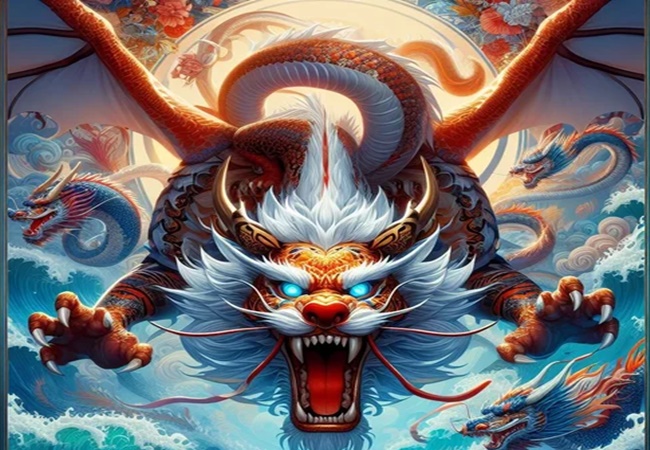
Teen Patti, often referred to as Indian Poker, is a popular card game originating from the Indian subcontinent. Known for its simplicity and thrilling gameplay, Teen Patti game has captivated players of all ages, especially in social gatherings and during festive occasions. Among its many variations, the Emperor Dragon Game has emerged as a distinctive and exciting twist, blending traditional elements with innovative rules. This version adds a layer of strategy and unpredictability, making it particularly appealing to teenagers and young adults who seek both fun and a challenge.
Understanding Teen Patti
Before delving into the Emperor Dragon Game, it’s essential to understand the basics of Teen Patti. Typically played with a standard 52-card deck without jokers, Teen Patti requires a minimum of three players and can accommodate up to ten. Each player is dealt three cards face down, and the objective is to have the best three-card hand according to traditional hand rankings. These rankings include combinations like Trail (three of a kind), Pure Sequence (straight flush), Sequence (straight), Color (flush), Pair (two of a kind), and High Card.
The game begins with a pre-determined bet amount placed by each player into the pot. The betting continues in a clockwise direction, with players having the option to either see their cards (playing seen) or keep them face down (playing blind). Players can bet, raise, or fold based on their confidence in their hand’s strength or their ability to bluff. The game proceeds until all but one player have folded, or a showdown is called to compare the hands of the remaining players.
The Emperor Dragon Game: A Twist on Tradition
The Emperor Dragon Game in Teen Patti introduces a unique set of rules and elements that differentiate it from the traditional version. This variation combines the core principles of Teen Patti with the allure of mythological themes and special powers, adding depth and excitement to the gameplay.
1. The Dragon Card:
In this version, a special card known as the Dragon Card is introduced. This card is chosen at random from the deck before the game starts and is kept face down in the center of the table. The Dragon Card holds a significant advantage, as any player who possesses this card in their hand at the showdown automatically wins the game, regardless of the standard hand rankings. This twist creates an element of suspense, as players speculate about the identity of the Dragon Card and its potential impact on the game.
2. Emperor’s Privilege:
Another unique feature is the Emperor’s Privilege. Before the game begins, one player is designated as the Emperor through a random draw or by mutual agreement. The Emperor has the power to peek at the Dragon Card once during the game. This privilege allows the Emperor to make more informed decisions, potentially giving them a strategic advantage. However, the Emperor must be cautious not to reveal their knowledge through their actions, as this could lead to suspicion and targeted betting from other players.
3. Special Powers and Roles:
To enhance the gameplay further, the Emperor Dragon Game incorporates special powers and roles that players can assume. These roles, inspired by mythical characters, come with unique abilities that can influence the course of the game. For instance:
- The Sorcerer: This player can swap one of their cards with a card from the deck once during the game. This ability can be a game-changer, especially if the Sorcerer manages to obtain the Dragon Card.
- The Warrior: This player can challenge another player to reveal their cards at any point during the game. The challenged player must comply, which can expose their hand and alter betting strategies.
- The Thief: This player can steal a random card from another player’s hand once per game. This action introduces an element of risk and surprise, as the stolen card could be the Dragon Card or a crucial component of a strong hand.
Strategy and Gameplay Dynamics
The introduction of the Dragon Card and special roles significantly impacts the strategic dynamics of the Emperor Dragon Game. Players must balance traditional Teen Patti strategies with the unique opportunities and threats posed by these new elements.
1. Bluffing and Betting:
Bluffing remains a critical aspect of the game, but players must now consider the potential presence of the Dragon Card. A player with a weak hand might still bet aggressively if they believe they possess the Dragon Card, forcing others to fold. Conversely, players with strong hands must be wary of the Dragon Card’s influence, as it could nullify their advantage.
2. Role Utilization:
Effective use of special roles is crucial. The Sorcerer’s ability to swap cards can dramatically alter their hand’s strength, while the Warrior’s challenge can disrupt opponents’ strategies. The Thief’s ability to steal cards adds an extra layer of unpredictability, as players must guard against this potential threat.
3. Emperor’s Advantage:
The Emperor’s Privilege to peek at the Dragon Card can provide a significant edge, but it also comes with the risk of drawing attention. Other players may scrutinize the Emperor’s actions more closely, attempting to discern if they hold valuable information. The Emperor must balance their advantage with the need to maintain a facade of uncertainty.
Social and Cultural Impact
The Emperor Dragon Game has gained popularity among teenagers and young adults, especially in urban areas where card games are a common form of entertainment. Its blend of traditional Teen Patti elements with modern twists appeals to a younger audience seeking novelty and excitement. The game’s mythological theme and special powers resonate with cultural storytelling traditions, adding an element of fantasy that enhances its allure.
Moreover, the Emperor Dragon Game encourages social interaction and strategic thinking. Players must read their opponents, devise strategies, and adapt to changing circumstances. These skills are valuable in real-life situations, fostering critical thinking and decision-making abilities.
Conclusion
The Emperor Dragon Game in Teen Patti offers a captivating variation that infuses traditional gameplay with innovative twists. By introducing elements like the Dragon Card, special roles, and the Emperor’s Privilege, this version adds depth, strategy, and excitement to the classic card game. Its popularity among teenagers and young adults underscores its appeal, blending cultural themes with modern entertainment. As the game continues to evolve, it promises to remain a beloved pastime, bringing people together and providing endless hours of fun and challenge.
